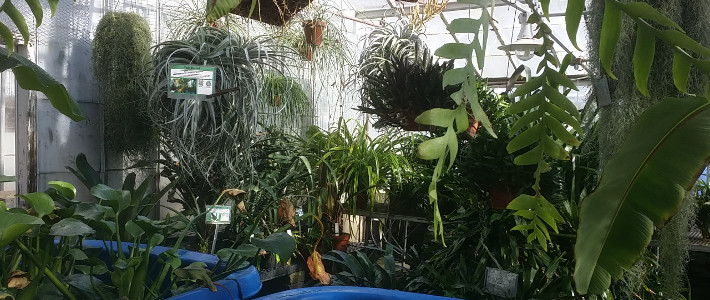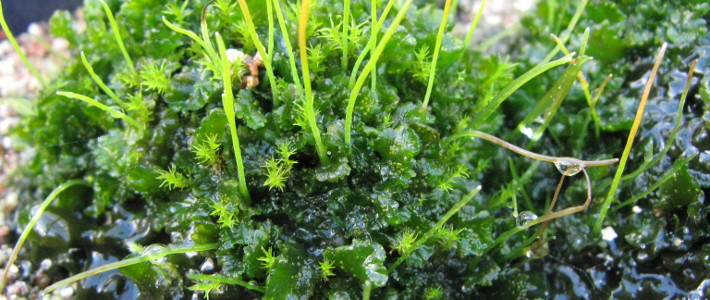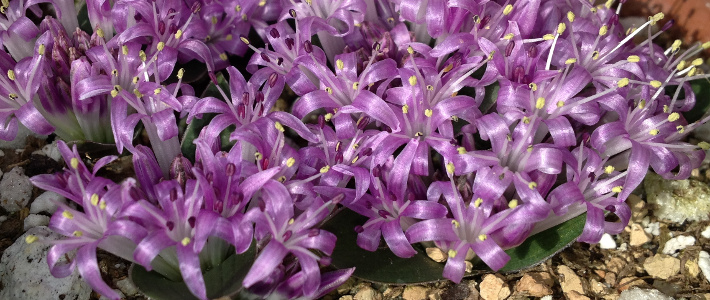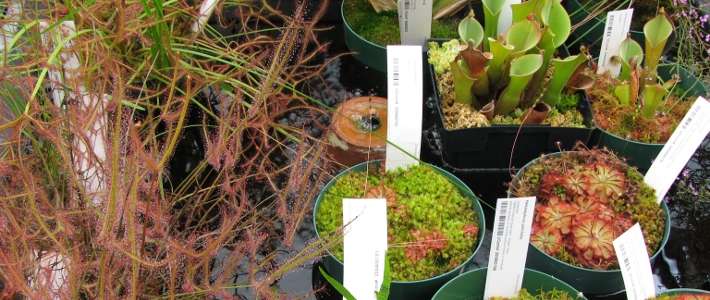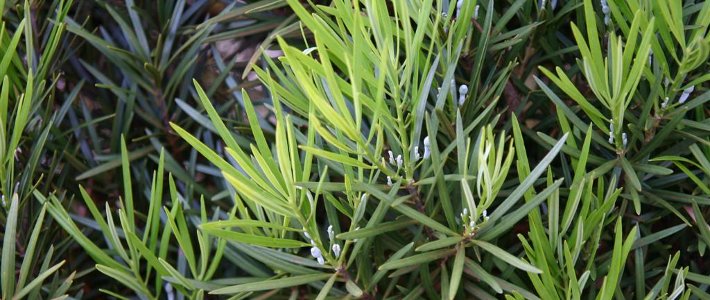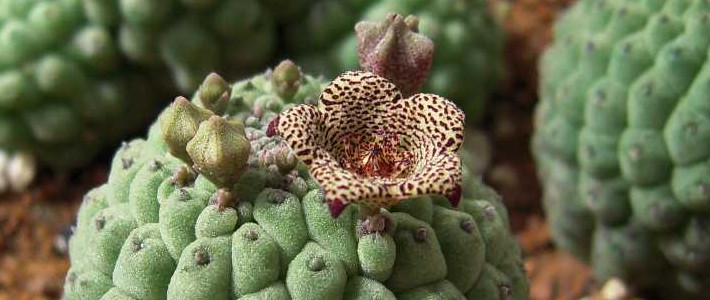Living Plant Collections
WELCOME BACK!
The greenhouses are now open to the public. The hours are 8:00am-4:00pm Monday-Friday and Saturday 10:00am-2:00pm (closed Sunday).
The EEB Greenhouse contains one of the most diverse teaching plant collections in the US. This outstanding collection is a core unit of the EEB Biodiversity Research & Education Collections and is used extensively for teaching and research here at the University of Connecticut.
The Plant Collections are generally segregated into two groups - Research Collections (which are covered elsewhere) and the General
Collection which includes most of the diverse teaching materials our facility is noted for.
Each accession in the teaching collection has a corresponding web page on this site. Primary means of accessing the collections data is by links on this page including taxonomic groups, geographic groups and special collections. A simple Alphabetic List is also available if you know the name of the plant you are looking for.
- The classification of ferns & fern allies primarily follows:
- PPG I (2016), A community-derived classification for extant lycophytes and ferns. Jnl of Sytematics Evolution, 54: 563–603. doi:10.1111/jse.12229
- Classification of Gymnosperms primarily follows:
- Maarten J.M. Christenhusz, James L. Reveal, Aljos Farjon, Martin F. Gardner, Robert R. Mill & Mark W. Chase, A new classification and linear sequence of extant gymnosperms, Phytotaxa 19:55-70 (2011)
- Classification of higher plants primarily follow:
- Ferns & Fern Allies
- Equisetidae (horsetails)
- Ophioglossidae
- Marattiidae
- Polypodiidae (leptosporangiates)
- Osmundales
- Hymenophyllales
- Gleicheniales
- Schizaeales
- Salviniales
- Cyatheales
- Polypodiales
- Gymnosperms & Gnetophytes
- Cycadidae
- Ginkgoidae
- Gnetidae
- Pinidae
- Angiosperms
- Basal Angiosperms
- Magnoliids
- Monocots I - Alismatoid Monocots
- Acorales
- Alismatales
- Petrosaviales
- Monocots II - Petaloid or Lilioid Monocots
- Monocots III - Commelinoid Monocots
- Basal Eudicots - Tricolpates
- Core Eudicots Rosids - Tricolpates
- Core Eudicots Rosids I - Tricolpates
- Core Eudicots Rosid II - Tricolpates
- Brassicales
- Crossosomatales
- Geraniales
- Huerteales
- Malvales
- Myrtales
- Picramniales
- Sapindales
- Core Eudicots Basal Asterids - Tricolpates
- Berberidopsidales
- Caryophyllales
- Cornales
- Ericales
- Santalales
- Core Eudicots Asteroid I - Tricolpates
- Core Eudicots Asteroid II - Tricolpates
- Apiales
- Aquifoliales
- Asterales
- Bruniales
- Dipsacales
- Escalloniales
- Paracryphiales
page updated on Thu, 30 Jan 2020 [bcm v4.0]
Collection Links
Quick Links
- New Arrivals & Collections Statistics
- Alphabetic Listing by Latin Name
- Listing by Family
- Currently in Bloom
- Greenhouse Bench Map (PNG)
- Accession Pages with video
- Wishlist: species we'd like to acquire.
- Nature Rx
Special Collections
- Ant Plants / Myrmecophytes
- Aquatic Plants
- Basal Angiosperms
- Beverage Plants
- Bryophytes
- Carnivorous Plants
- Dye Plants
- Edible Plants
- Ferns & Fern Allies
- Fiber Plants
- Gymnosperms
- Medicinal Plants
- Parasitic Plants
- Spice Plants
Pollination Syndromes
- Wind (anemophily)
- Water (hydrophily)
- Bee (melittophily)
- Butterfly (psychophily)
- Moth (phalaenophily)
- Fly (myophily and sapromyophily)
- Bird (ornithophily)
- Bat (chiropterophily)
- Non-flying Rodent (therophily)
- Beetle (cantharophily)
Collections by Region (Summary)
- Europe
- Africa
- Asia - Temperate
- Asia - Tropical
- Australasia
- Pacific
- Northern America
- Southern America
- Antarctic
